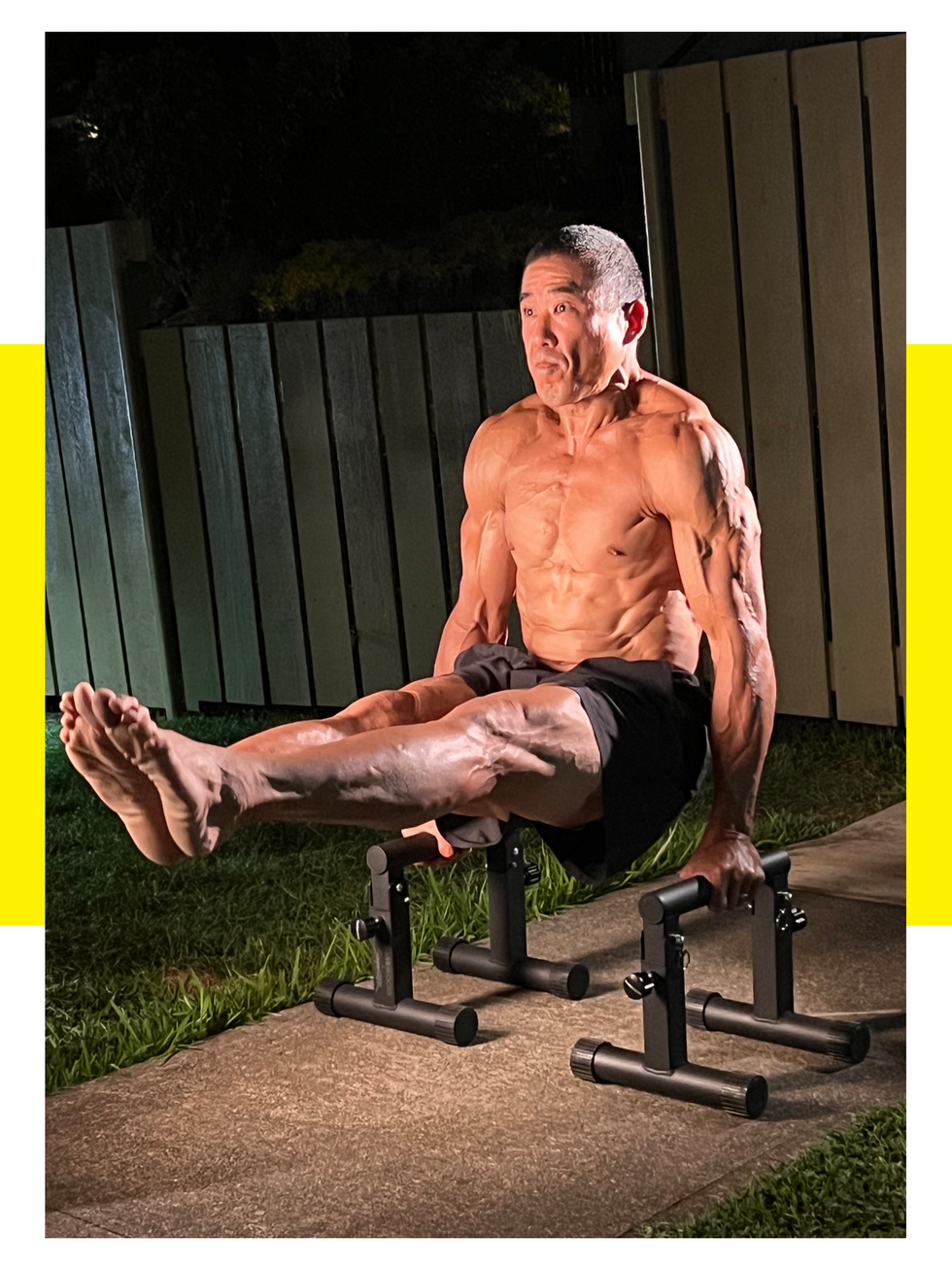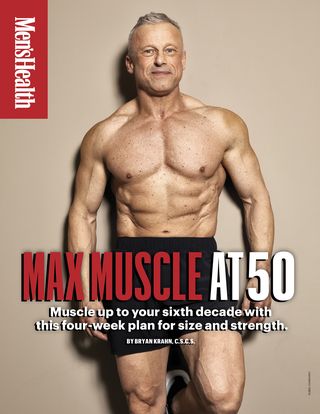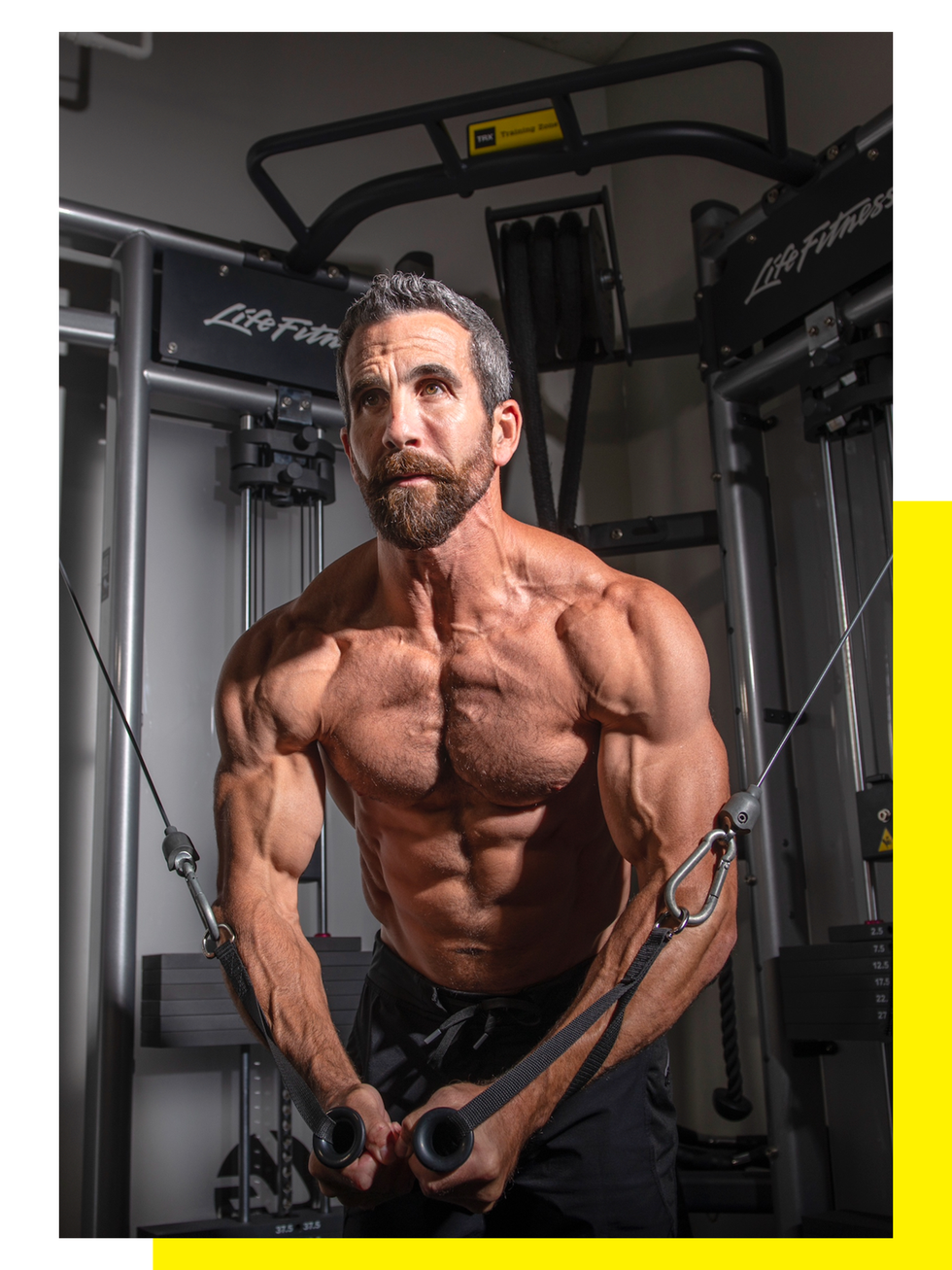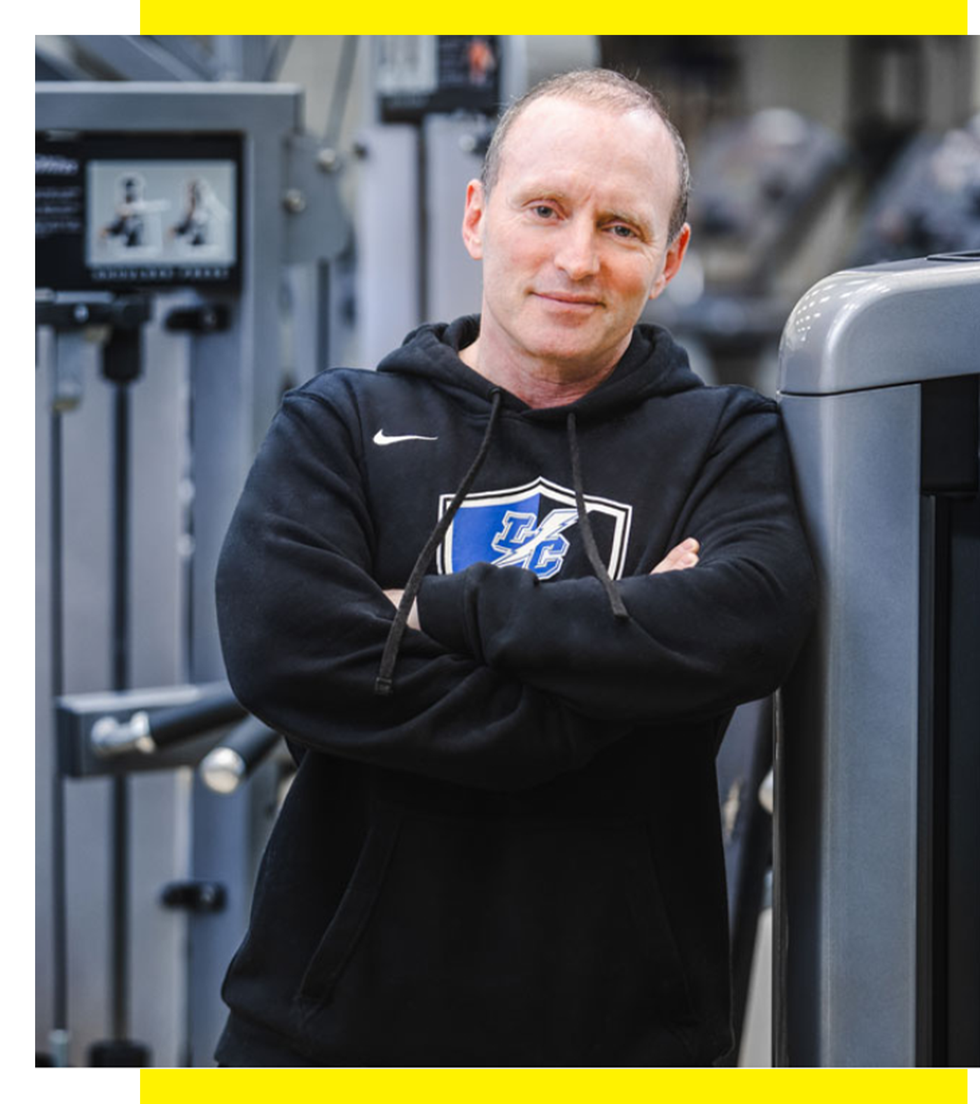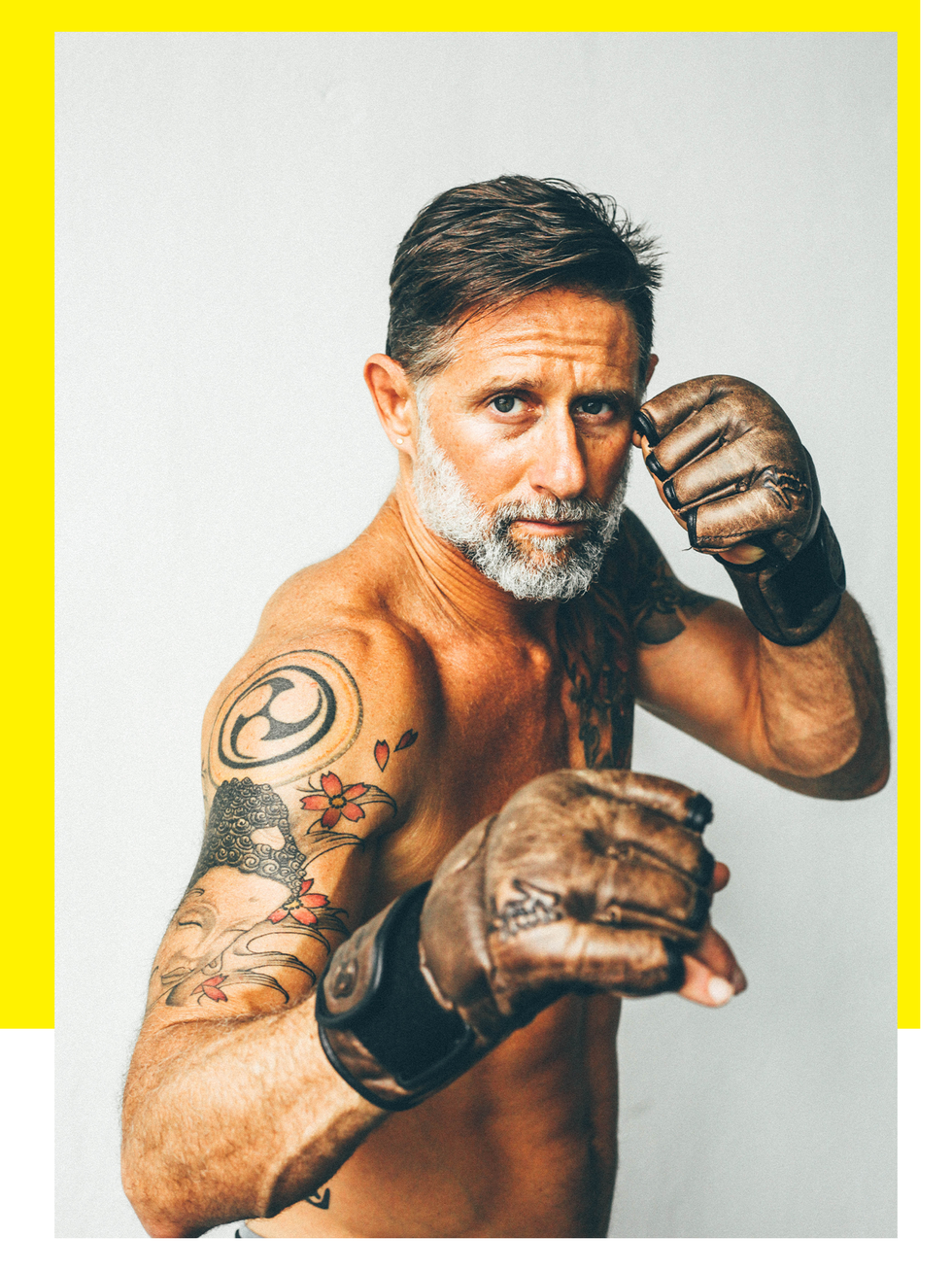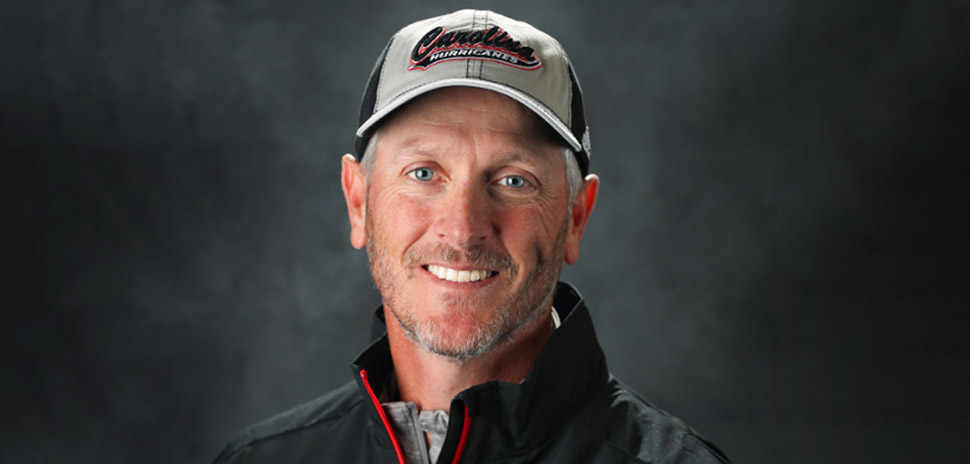Fitness
6 Fitness Influencers Over 50 Who Deserve a Follow
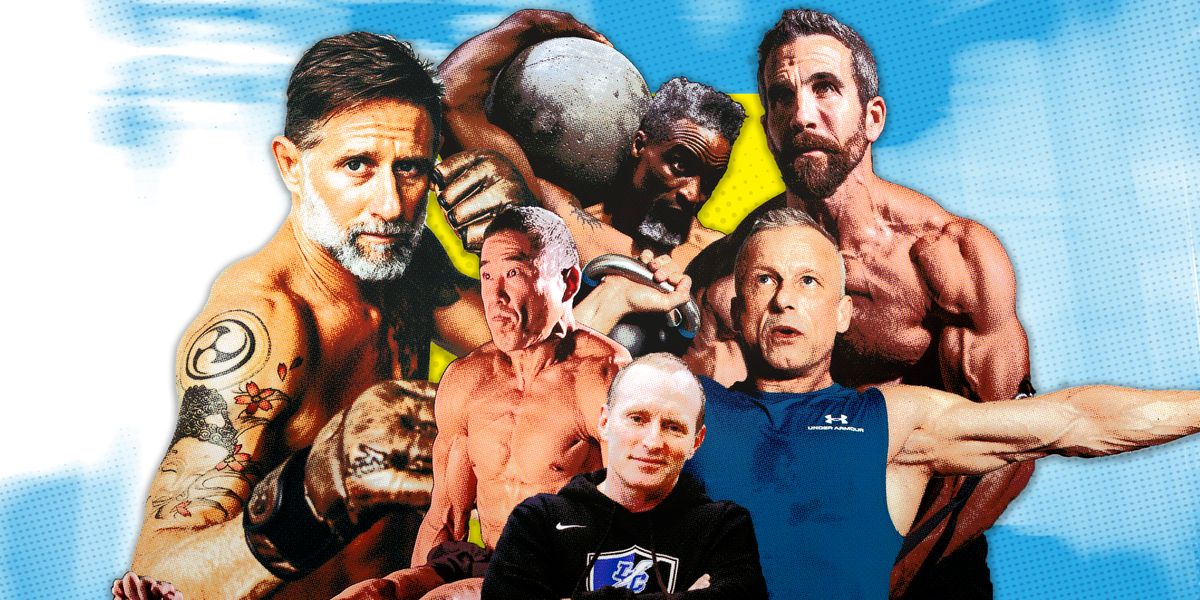
This story is part of This Is 50+—an in-depth look at guys who are thriving later in life, with tips and tricks on how all of us can future-proof our bodies.
TAKE A SCROLL through your social media feed, and you’ll find no shortage of fitness content. The stars of those exercise routine and form videos are probably a lot of ripe 20-and-30-year-olds, though, in the prime of their physique.
Scroll a little further, and you’ll find another impressive group of fitness influencers over 50 who are keeping up with (and often surpassing) those 30-year-olds. Sure, it’s cool to watch them do wall sits while holding 100 pounds, juggle enormous kettlebells, and even rep out lock jaw push ups with 70 pound (you really have to see this one to believe it). But, best of all, they’re utilizing their platforms to teach others how to do the same—at any age.
Regardless of how old you are, what kind of exercise you enjoy, or where you are in your fitness journey, there’s so much to learn from these inspiring influencers. Here are five of our favorites, along with their advice for performing at your best after 5o.
Colin Daring
COLIN DARING’S JOURNEY began with a simple bench in the basement of his childhood home, where his father taught him how to train. Often, they would go to a local park and do calisthenics, like pull ups—something the 53-year-old senjoys doing to this day.
After traveling to different countries and seeing their traditional forms of training, he started becoming interested in “odd objects,” as he calls them. He began training with a variety of equipment including kettlebells, Atlas stones, sandbags, and mace clubs. Now, he takes to social media to post videos about the use and benefits of these different styles of training (and some more traditional training tips, too).
Daring is aptly named—much of his content includes heavy kettlebell juggles that are not for the faint of heart. Bells weighing upwards of 70 pounds flying behind the back, under the leg, and over the shoulder—all magically sequenced together in a way you have to see to believe. He teaches kettlebell workshops at a few gyms in Brooklyn, and offers online training. Even in his 50s, “training is now embedded in my lifestyle,” he says. He’s only looking to get stronger, too—he sets short term and long term goals for himself that help him stay consistent and motivated.
HIS ADVICE: Find movement you enjoy that keeps you physically and mentally engaged. “Watching TV on the treadmill doesn’t really count,” he says. “Think tennis, volleyball, basketball. Exercises that have the mind and the body engaged at the same time.”
Bill Maeda
HAWAII-NATIVE BILL Maeda, 55, has been a trainer since 1987. Recovering from addiction, and being diagnosed with PTSD and ADHD, training was the only job he was able to hold for many years, he says. “I could hide from the world in my small gym near Waikiki, and fixate on one client at a time.”
In 2012, he was diagnosed with stage 3 colon cancer. He underwent surgery and chemotherapy that left him “physically plundered and deeply depressed,” he says. That carried all the way through 2019, when his mother passed away, and into 2020, when lockdown began. During quarantine, he randomly decided to take a video of how many push ups he could do in 10 minutes, and posted it to YouTube. He didn’t think twice about it—until “an avalanche” of notifications began to light up his screen.
“Somehow that video took off, and the comments that came in changed my life,” Maeda says. “People from everywhere were saying the kindest and most encouraging things that I had ever heard. Their kindness and support taught me to stop feeling sorry for myself and redirect that energy into serving, teaching, and at the very least entertaining any who grace me with a few moments of their time to watch my videos.”
After that, he dedicated himself to filming his daily workouts. That was more than 4 years ago. Since then, 2 million people have followed him to watch his impressive lifts and less traditional strength feats (that lock-jaw push up we talked about earlier? Yeah, that was him).
HIS ADVICE: Start easy. Like, really easy. “The goal is to get in the habit of training every single day,” and continuing to do so, he says. “The only way to do this is by making the workouts very short and very easy.”
He suggests starting with just 5 minutes on the clock. Pick a handful of exercises you can do and are comfortable with. Work through ranges of motion that are doable. “This is exactly where you want to be. You should also feel certain that they can do the exact same thing tomorrow…and the next day and the next day,” he says.
When you are ready to dedicate more time, add a minute, and then another—slowly build to where you want to be. The short time frame will help build the habit, which is more important than the exercise itself. “That’s what they mean by easy does it.”
Bryan Krahn, C.S.C.S.
BRYAN KRAHN C.S.C.S. HAS been studying, practicing, and writing about exercise science and training for almost 20 years. In fact, he’s written lots of content for Men’s Health, including our muscle-building guide for men over 40.
Krahn, 50, dubs himself a “semi-serious physique-athlete,” meaning he builds and maintains a aesthetic frame, but does not compete in body building competitions. While you might find a picture or two of his impressive six-pack on his Instagram, you’ll find that most of his content is information based. He uses “a base of scientifically supported industry practices but also a litany of techniques that have been shown to work in the real world,” to fuel his training programs and his content.
HIS ADVICE: “Train like you want to show up again tomorrow,” he says. “After 50, longevity and preventing injury becomes the new ‘optimum.’” To do that, he suggests three things. First, never work through pain—find an alternative if any exercise bothers you.
Second, don’t be afraid to use safer alternatives to high-risk lifts. For example: “A barbell overhead press is a great lift if you have the technique and shoulder mechanics for it. But using dumbbells with a neutral grip is easier on the shoulder and just as effective.”
Third, aim for higher reps with lighter weight on most exercises. You’ll still get the muscle building benefit without sacrificing safety. You can find even more of his tips for building muscle after 50 here.
Paul Sklar
PAUL SKLAR, C.S.C.S. IS a Division 1 athlete turned fitness expert. He was a distance runner during his time at Wake Forest University, where he earned his bachelors degree in Exercise and Sports Science. He began competing in duathlons, where he was ranked second nationally, and 25th in the world.
The 52-year-old been a professional trainer since 1993, working with novices and professional athletes alike. He’s taken his expertise to Instagram—where he posts his workouts, mobility exercises, and recovery routines.
HIS ADVICE: “If you want to get lean (and have a strong foundation), make sure you never miss leg day. You get better bang for your buck with a well-rounded program.”
Brad Schoenfeld
SOCIAL MEDIA IS full of misinformation. If you want to make sure you’re getting foolproof, science-backed fitness info, look for no further follow than 61-year-old Brad Schoenfeld, Ph.D., C.S.C.S..
Schoenfeld is a professor in the Department of Exercise Science and Recreation at Lehman College in NYC, and a leading researcher on muscle building and fat loss. He’s also competed as a drug-free body builder for most of his life. A self-coined “fitness myth-buster,” his page is a one-stop shop for real tips and tricks for body composition.
HIS ADVICE: “The aging process tends to impair recovery; you simply cannot recuperate as well at 50 vs when you were 20. Thus, it’s important to be cognizant of how your body responds to training and manage exercise volume and frequency accordingly,” he says.
Cameron Shayne
CAMERON SHAYNE’S INSTAGRAM feed looks a bit different from that of your traditional male fitness influencer. Instead of hulking around big weights, you’ll find the 52-year-old crawling on the floor, demonstrating impressive feats of mobility, and taking down guys half his age in Jiu-Jitsu fights.
In the 90s, Shayne established himself as one of the pioneering voices and teachers of contemporary yoga, martial arts and the movement culture in Los Angeles. In 2001, he designed Budokon Mixed Movement Arts by combining the combat arts of Brazilian Jiu-Jitsu and Mixed Martial Arts together with yoga, crawling patterns, mobility, calisthenics, and cognitive studies into a single black belt system. Now, he trains some of the best professional UFC, ADCC, and Bellator fighters in the world. Now, he takes his teachings to social media, where he’s gained quite a following.
HIS ADVICE: “Athletic longevity depends greatly on joint mobility. Focus on the 3 essential qualities of joint health: mobility, flexibility and strength,” he says.
This is just the beginning. See what else guys at 50+ are thinking, doing, and crushing here.
READ MORE

Fitness
How to train your brain to truly enjoy exercise, according to science
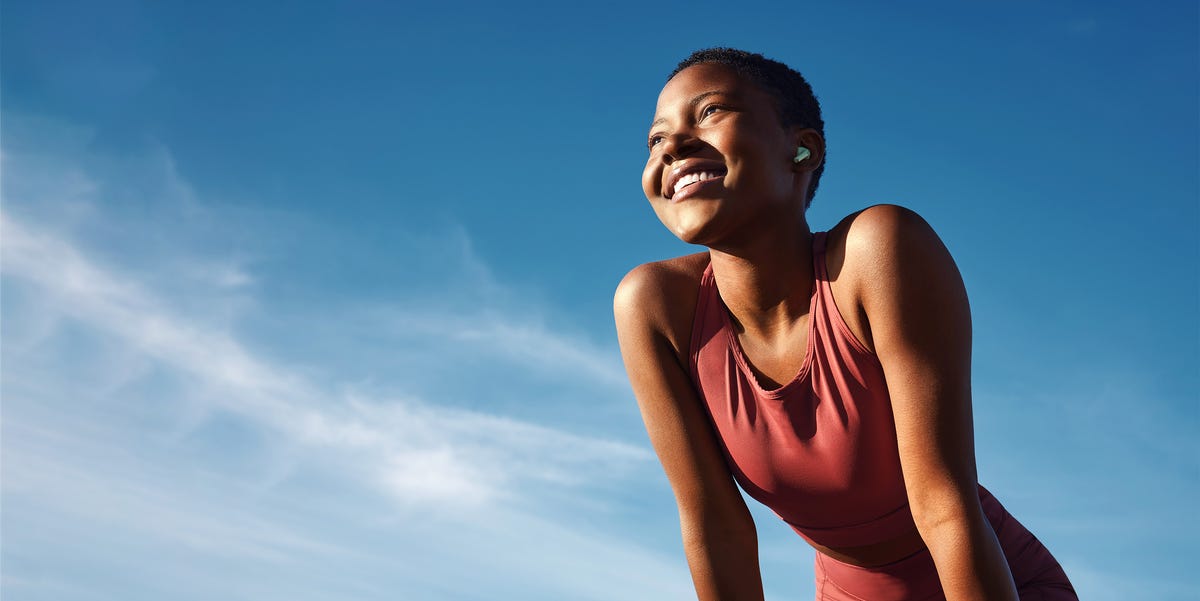
Truth: They woke up like this. Some people really are more inclined to find joy in exercise. But! You can rewire your brain to join that ‘love it’ group, research shows.
When experts measured the electrical connectivity in the brains of people who are recreationally active, they found that those who perceive themselves as being highly tolerant of physical effort had greater levels of ‘remembered pleasure’ afterward, according to the new study by Florida International University. Meanwhile, those who said they were not as tolerant had a certain amount of ‘anticipatory dread,’ or negative feelings, before the work even started.
The good news is that you can teach yourself to be more accepting, physically and mentally, of movement—which will help you feel excited about exercise in general and crave it more often. By trying some (or all!) of these tactics, you’ll likely notice benefits immediately, says study lead Marcelo Bigliassi, PhD. To extend the effect, keep efforts ongoing, so subtle changes compound over time. Onward!
Meet the experts: Marcelo Bigliassi, PhD, is an assistant professor of neuroscience and psychophysiology at Florida International University. Diogo Teixeira, PhD, is a professor on the physical education and sport faculty at Lusófona University in Lisbon, Portugal.
1. Add appeal to the flavour of exercise you already like.
Let’s say you don’t mind weight lifting but definitely don’t have the can’t-wait feels leading up to a workout. You can create artificial motivation and enjoyment by listening to music or a podcast while you sweat, using virtual reality, or even just engaging in positive self-talk, Bigliassi says. Or perhaps lifting with a group or a friend is the missing ingredient for you. ‘You’re creating outside signals that can help you push a little bit harder and a little bit faster.’ The goal is to foster positive experiences with your sweat sessions. Gradually, the emotion will become second nature without these external cues.
Not sure where to start with finding your best-match activity? Think back to your recent past, and even to your childhood, says Bigliassi. ‘There are usually clues.’ For example, if you used to love swimming at your neighborhood pool, maybe that could translate to swimming laps at your local gym. Or perhaps you were a dancer at one point in your life. Taking a virtual or IRL dance fitness class could spark passion.
2. Challenge yourself *just* enough.
No matter what you’re doing, the activity needs to be tough enough that you’ll have a feeling of accomplishment that makes you want to repeat it. But it should also be within your capabilities, in order to protect your sense of self-efficacy (that is, your belief in your abilities), says Bigliassi. When people experience an exercise intensity that’s not aligned with their preference or tolerance, they exercise less in the future, research shows.
Take this thinking a step further: By choosing, say, a running pace you consider pleasurable (read: not all-out), you may find running more enjoyable—and more easily repeatable in the future. This ‘autonomy promotion’ also applies to resistance training, says researcher Diogo Teixeira, PhD. So if resting longer between sets makes you feel better, do it. (It’ll create those positive associations in your brain.) ‘More is not always better, and a pleasurable activity will be more easily sustained over time,’ Teixeira says.
Monitoring with a tracker can also allow you to see the work you’re putting in, which improves mindset around fitness and, therefore, happiness pertaining to exercise, found a study in the Journal of Medical Internet Research.
3. Send your mind a motivational sign.
Humans are wired to save as much energy and store as much fat as possible. So, sometimes—and especially when exercise gets intense—you need to remind yourself why you’re going through this perceived insanity. ‘It’s difficult for some parts of our brain to make sense of exercise,’ Bigliassi says.
For example, recalling that cardio is important for both heart health and cognitive function can act as a motivational signal. That helps you feel more positive in the moment and be more consistent with exercise down the road; you now associate the activity with purpose and appealing health outcomes. Surprisingly, negative thoughts can also act as positive signals (e.g., envisioning your energy and mood tanking from not moving that day can be incredibly powerful). Consider this your sign to go for a walk or gear up for a workout right about…now.
More fitness stories…
Fitness
Exercise tips: 10 healthy drinks that boost stamina, help muscles recover faster

Fitness
Ernie Hudson Shares His Workout Motivations at 78

WHEN ERNIE HUDSON walked the red carpet at the premiere of Ghostbusters: Frozen Empire—40 years after he starred in the first Ghostbusters movie—the internet could not get over how buff he looked, and had all kinds of questions about how he maintains such a fit and youthful appearance at the age of 78. In the latest episode of Gym & Fridge, Hudson invites Men’s Health into his Los Angeles home to break down the diet and training routine that keep him feeling good.
Firstly, Hudson is an intermittent faster, and won’t eat before noon. His first meal of the day tends to be oatmeal, or smoked salmon and eggs. But while salmon is an almost-daily staple, you won’t find many other varieties of fish or seafood in his fridge; he has a severe shellfish allergy. It’s so bad, in fact, that it proved to be one of the most dangerous parts of his service in the U.S. Marine Corps.
“My drill instructor made me eat a piece of shrimp. I kept saying, I’m allergic! He couldn’t believe that little piece of shrimp would be a problem,” he says. “I ate it, and I had an awful asthma attack, and I was eventually discharged from the military.”
Allergies and intolerances aside, there is not much that Hudson would 100% exclude from his diet. Similarly, he avoids fad diets these days. As he’s gotten older, he mainly tries to keep moderation in mind.
“I don’t have any rules of ‘I don’t eat.’ When I make a rule, every part of me wants to break it, so I don’t make rules,” he says. “There’s a price to pay for everything, and unless I really want to pay that price, it’s best to just leave it alone… The problem with diets is, as soon as you get off them, the weight starts to come back. The toughest diet I ever tried was called the Beverly Hills diet; grapefruit, cottage cheese. It was stupid!”
“I think as I’ve gotten older, you realize that you’re never going to do the things you know you should do,” he continues. “You’re never going to eat the way you should. I’ve done every diet you can imagine. At some point you have to just try to be a little bit better.”
Hudson hits the gym three times a week, working out at Studio G Fitness, where he’s been going for the last 25 years. “I’m not the kind of guy who can get motivated to work out,” he explains. “I need someone else to tell me what to do.”
He keeps his sessions to an hour or less, hitting strength, mobility and balance on different days, and on the occasions when he can’t get to a gym, he’ll make sure that he does at least 100 pushups.
“At a certain stage in life, it’s just common sense stuff; I don’t want to break anything, I don’t want to overpush anything,” he says. “You only get one body, so it’s very important for me to keep it as functional as possible. Also, I’ve been married close to 50 years, and I don’t want my wife pretending that I’m attractive. I want at least to have a smile when I take off my shirt!”
-

 Kentucky1 week ago
Kentucky1 week agoKentucky first lady visits Fort Knox schools in honor of Month of the Military Child
-

 News1 week ago
News1 week agoIs this fictitious civil war closer to reality than we think? : Consider This from NPR
-

 World1 week ago
World1 week agoShipping firms plead for UN help amid escalating Middle East conflict
-

 Politics1 week ago
Politics1 week agoICE chief says this foreign adversary isn’t taking back its illegal immigrants
-

 Politics1 week ago
Politics1 week ago'Nothing more backwards' than US funding Ukraine border security but not our own, conservatives say
-

 News1 week ago
News1 week agoThe San Francisco Zoo will receive a pair of pandas from China
-

 World1 week ago
World1 week agoTwo Mexican mayoral contenders found dead on same day
-

 Politics1 week ago
Politics1 week agoRepublican aims to break decades long Senate election losing streak in this blue state

